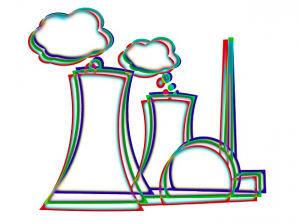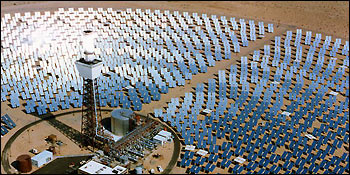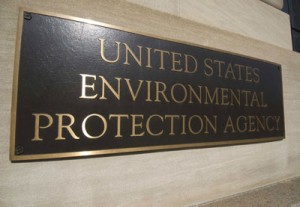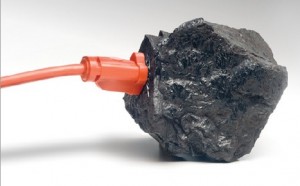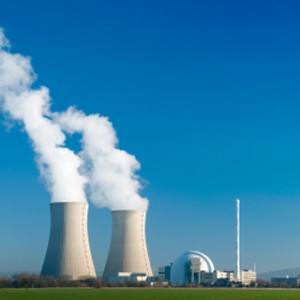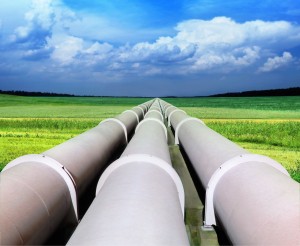121 item(s) were returned.
Member
U.S. House of Representatives
Two of the most pressing issues facing us today are the need to address the economic costs and public health risks associated with climate change and strengthening the middle class. Over 97 percent of climate scientists agree that our planet is warming, primarily as a result of fossil fuel combustion, and that this warming is already causing more frequent, dangerous, and expensive extreme weather events. At the same time, our middle class is struggling. While the productivity of our economy increased by 75 percent between 1979 and 2012, wage growth for middle class workers increased by only 5 percent during… [more]
View InsightPresident
Kadak Associates, Inc.
Without significant gains in storage technology, electric generation from solar and wind will not meet the world’s energy needs. Nuclear power, however, can deliver electric power in a sufficiently safe, economical and secure manner to supplement supply from other carbon-free sources. Despite this, there remain major objections to the safety, cost, waste management and proliferation risk of nuclear power, which I’ll seek to address here. Safety There have been three serious accidents that challenged the safety record of nuclear power: the Three Mile Island (TMI), Chernobyl, and the tsunami-induced Fukushima accident. In all these accidents there were no immediate public… [more]
View InsightProfessor of Physics
University of Califoria at Berkeley
Some oppose shale gas because it is a fossil fuel, a source of carbon dioxide. Some are concerned by accounts of the fresh water it needs, by flaming faucets, by leaked “fugitive methane”, by pollution of the ground with fracking fluid and by damaging earthquakes. Although I believe that global warming is real, caused by humans, and a threat to our future, these concerns about shale gas are either largely false or can be addressed by appropriate regulation such as the controversial but ultimately positive developments in Illinois. Shale gas can not only reduce greenhouse gas emissions, but also reduce a deadly pollution known… [more]
View InsightDistinguished Professor of Energy
University of California, Berkeley
This is the second in a series of discussions led by invited speakers at the upcoming Physics of Sustainable Energy conference to be held March 8-9, 2014 at the University of California, Berkeley. Find more details below. The new Ivanpah Solar Electric Generating System located in California’s Mojave Desert is the world’s largest concentrated solar thermal power station. The first of it’s kind at this scale, Ivanpah’s 392 megawatts of capacity (enough to power 140,000 homes) is generated by 360,000 garage-door-sized mirrors concentrating sunlight onto a 40-story boiler tower. The heat from the sunlight boils water in the tower and… [more]
View InsightVisiting Scholar
American Enterprise Institute
According to the Environmental Protection Agency, the Social Cost of Carbon (SCC) is supposed to be “An estimate of the economic damages associated with a small increase in carbon dioxide (CO2) emissions, in a given year”. However, the EPA’s “analysis” of the “social cost of carbon,” developed recently as justification for a rule constraining energy use by microwave ovens, ignores the fact that U.S. emissions of greenhouse gases are about 17 percent of the world total. Therefore, even an immediate reduction by half in U.S. emissions would yield a reduction in world temperatures of about one-tenth of one degree by… [more]
View InsightIt has been recently suggested that natural gas is a more climate friendly alternative to many fossil fuels, and a necessary “bridge” to a low carbon future. The main component of natural gas is methane, which is a powerful GHG that has significantly more heat trapping potential than CO2. Natural gas is the cleanest burning fossil fuel, yet when it is extracted from the ground, unburned methane can escape into the atmosphere. Significant discussion has developed around the extent of these fugitive emissions and whether they undermine the climate benefits of using natural gas as a primary fuel. A 2011… [more]
View InsightThe U.S. Environmental Protection Agency (EPA) released draft rules on September 20th, to limit carbon emissions from new coal power plants. The proposed rules are part of President Obama’s broader Climate Action Plan aimed at combating climate change and improving public health, according to the EPA. Under the rules, new coal-fired power plants would be limited to 1,100 pounds of CO2 per megawatt-hour, or could opt to meet stricter average emissions limits that grant additional operational flexibility. The rules also would require new plants to implement partial carbon capture and storage (CCS) technology. Critics of the proposed rules argue that… [more]
View InsightPresident
Kadak Associates, Inc.
The availability of cheap natural gas in the United States has stalled the construction of new nuclear plants. While four new nuclear plants are under construction in the US, many of the proposed 15 – 20 new plants were put on “hold” pending either an increase in electricity demand or increase in the price of natural gas. However, nuclear remains the largest source of emissions-free power in the U.S. at 19% of total electricity generation. The question posed for this dialogue is whether there is a justifiable reason to build new nuclear plants to provide base load power, despite the… [more]
View InsightDirector, Stakeholder Relations/External Affairs
Brookhaven National Laboratory
Keystone XL has been called the world’s best known pipeline that has not been built. Controversy over the pipeline itself has largely subsided but this project linking the oil sands of Northern Alberta to the large refineries of the Gulf Coast has become a rallying point for an “off oil” campaign. A presidential permit for import facilities is the sole remaining requirement before construction can begin. KXL would be the 82nd major pipeline in the US, and is the safest and most technologically advanced. It would provide diluted bitumen from Alberta’s oil sands and Bakken crude from Montana and North Dakota to… [more]
View InsightCo-Executive Director
The Institute for Carbon Removal Law and Policy, American University
The European Union’s Emissions Trading System (EU-ETS) is an extremely important component of global climate policymaking. It represents more than 80% of the global market value of emissions trading permits and serves as the cornerstone of the EU’s response to climate change. Moreover, a number of other States and sub-national actors, such as California – which has the second largest carbon trading program in the world – have either linked their emissions trading systems to the EU-ETS, or contemplate doing so in the future. However, with the price of allowances plummeting a startling 83% from 2008-2013 the EU-ETS is abjectly… [more]
View Insight